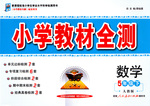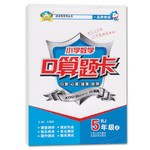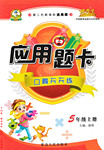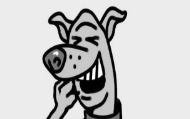
完形填空(共20小题;每小题1.5分,满分30分)
阅读下面短文,掌握其大意,从每题所给的ABCD四个选项,选出最佳选项,并在答题卡上将该项涂黑。
In the 1450s Johannes Gutenberg, a Gennan printer, developed a new printing press(印刷机)。Then single letters could be ______ in lines to create a page of text. The letters were made of metal.Each one could be ______ to different parts of the press,depending on which words were_______ on a certain page. This was one of the most important _______ in the history of pringting.
_______, most books had been created by copying out text by hand. The____of a single book would take many hours or even days. With the Gutenberg press, ______ could be printted in several seconds, and many copies of books could be created in a few hours.
Gutenberg's printing press was not so much an i_______, however, as an improvement of developing technologies. The Chinese were the first to use wooden blocks(木刻版),as early as the 8th century. Then great _____was made around 1040. The movable type was invented by Bi Sheng in China. European _______the printing methods centuries later. Another contribution to Cutenberg`s system also come from the East,______.The Chinese invented paper using ______materials,including old clothes. The kind of the inexpensive paper was introduced into Europe in 1000 or so. This kind of paper was ____for the new European printing presses,______it took in the only ink required for the metal type.
Printing soon became an important ____in a rapidly growing world. By 1500,nearly 35,000 books were in print worldwide. But the printing press did not ______a lot for a long time. In the 19th century , however, iron _______wood in the press`s framework. And paper became______in continuous rolls rather than more expensive single pieces. Steam engines _____the speed at which the press ran. In the late 1900s,the introduction of better presses greatly _____the time it took to turn ideas into books.
1.A.used B. put C. read D. written
2.A.shown B.turned C. moved D. added
3.A.needed B. lost C. collected D. found
4.A.challenged B. studies C. discoveries D. developments
5.A.Recently B. Immediately C. Previously D. Finally
6.A.discussion B. production C. instruction D. preparation
7.A.pages B. ideas C. models D. characters
8.A.attraction B. expressin C. competition D. invention
9.A.accident B. research C. progress D. situation
10.A.believed B. followed C.tested D. required
11.A.paper B. wood C. letters D. metal
12.A.fine B. thin C. heavy D. cheap
13.A.useless B. special C. good D. impossible
14.A.as B. although C. until D. unless
15.A.fashion B. industry C. trick D. belief
16.A.apply B. help C. work D. change
17.A.replaced B. controlled C. became D. protected
18.A.necesary B. available C. normal D. valuable
19.A.reached B. limited C. increased D. kept
20.A.made B. allowed C. wasted D. reduced
 小学教材全测系列答案
小学教材全测系列答案 小学数学口算题卡脱口而出系列答案
小学数学口算题卡脱口而出系列答案 优秀生应用题卡口算天天练系列答案
优秀生应用题卡口算天天练系列答案科目:高中英语 来源:2014-2015学年四川回龙中学高二6月阶段测试英语试卷(解析版) 题型:单项填空
I’d prefer to my judgement until I know all the facts.
A.reserve B.observe C.preserve D.deserve
查看答案和解析>>
科目:高中英语 来源:2014-2015学年湖南长沙市等十三校高三第二次联考英语试卷(解析版) 题型:单项填空
As many as 20 dishes are provided in the dining hall today, choose
_ suits you best.
A.whatever B.whenever
C.whichever D.wherever
查看答案和解析>>
科目:高中英语 来源:2014-2015学年河北石家庄二中高三开学考试英语试卷(解析版) 题型:阅读理解
B
When you make a mistake, big or small, cherish it like it’s the most precious thing in the world. Because in some ways, it is.
Most of us feel bad when we make mistakes, beat ourselves up about it, feel like failures, get mad at ourselves.
And that’s only natural: most of us have been taught from a young age that mistakes are bad, that we should try to avoid mistakes. We’ve been scolded when we make mistakes—at home, school and work. Maybe not always, but probably enough times to make feeling bad about mistakes an unconscious reaction.
Yet without mistakes, we could not learn or grow. If you think about it that way, mistakes should be cherished and celebrated for being one of the most amazing things in the world: they make learning possible; they make growth and improvement possible.
By trial and error—trying things, making mistakes, and learning from those mistakes—we have figured out how to make electric light, to paint the ceiling of the Sistine Chapel, to fly.
Mistakes make walking possible for the smallest toddler, make speech possible, make works of genius possible.
Think about how we learn: we don’t just consume information about something and instantly know it or know how to do it. You don’t just read about painting, or writing, or computer programming, or baking, or playing the piano, and know how to do them right away. Instead, you get information about something, from reading or from another person or from observing, then you make mistakes and repeat, making mistakes, learning from those mistakes, until you’ve pretty much learned how to do something. That’s how we learn as babies and toddlers, and how we learn as adults. Mistakes are how we learn to do something new—because if you succeed at something, it’s probably something you already knew how to do. You haven’t really grown much from that success—at most it’s the last step on your journey, not the whole journey. Most of the journey was made up of mistakes, if it’s a good journey.
So if you value learning, if you value growing and improving, then you should value mistakes. They are amazing things that make a world of brilliance possible.
1.Why do most of us feel bad about making mistakes?
A. Because mistakes make us suffer a lot.
B. Because it’s a natural part in our life.
C. Because we’ve been taught so from a young age.
D. Because mistakes have ruined many people’s careers.
2.According to the passage, what is the right attitude to mistakes?
A. We should try to avoid making mistakes.
B. We should owe great inventions mainly to mistakes.
C. We should treat mistakes as good chances to learn.
D. We should make feeling bad about mistakes an unconscious reaction.
3.The underlined word “toddler” in Paragraph 6 probably means .
A. a small child learning to walk
B. a kindergarten child learning to draw
C. a primary pupil learning to read
D. a school teenager learning to write
4.We can learn from the passage that .
A. most of us can really grow from success
B. growing and improving are based on mistakes
C. we learn to make mistakes by trial and error
D. we read about something and know how to do it right away
查看答案和解析>>
科目:高中英语 来源:2015-2016学年山西右玉一中高一上第一次月考英语试卷(解析版) 题型:阅读理解
One day an ant was drinking at a small stream and fell in. She made desperate(adj.拼死的) efforts to reach the side, but made no progress at all. The poor ant almost exhausted(adj.精疲力竭的) was still bravely doing her best when a dove saw her. Moved with pity, the bird threw her a blade of grass, which supported her like a raft, and thus the ant reached the bank again. While she was resting and drying herself in the grass, she heard a man come near. He was walking along barefooted with a gun in his hand. As soon as he saw the dove, he wished to kill it. He would certainly have done so, but the ant bit him in the foot just as he raised his gun to fire. He stopped to see what had bit him, and the dove immediately flew away. It was an animal much weaker and smaller than herself that had saved her life.
1.The ant could not reach the side though _______.
A. she cried for help B. she asked the dove to save her
C. she tried very hard D. she could smell well
2.The dove saved the ant because _______.
A. she was the ant's friend
B. she took pity on the poor ant
C. the ant was almost exhausted
D. the ant had been struggled in the water for a long time
3.The ant succeeded in getting on the bank with the help of _______.
A. a leaf B. a piece of wood
C. a blade of grass D. a raft
4.Just as the man shot at the dove, _______.
A. the dove immediately flew away
B. the dove hid himself in the grass
C. the ant told the dove to leave at once
D. he felt something biting him in the foot
5.In writing the story, the writer wants to show _______.
A. how clever the ant was
B. how kind the dove was
C. how the ant and the dove helped each other
D. we often need help from others, therefore we should help others as much as we can
查看答案和解析>>
科目:高中英语 来源:2014-2015学年河北邯郸高三摸底英语试卷(解析版) 题型:阅读理解
Next time you hear a funny joke you’d better not laugh too hard. According to a paper published by the British Medical Journal, laughter isn’t always the best medicine. Sometimes it can even be harmful. Professor Robin Ferner from the University of Birmingham, one of the authors of the study, found that bad things could happen to people who laughed too much. He says: “We found people with heartbeat problems which had stopped their heart, we found people who had fainted(昏倒), and we found people who’d dislocated their jaws or burst their lungs.”
It seems that laughing can be no laughing matter. But it’s not all doom and gloom. Professor Ferner says there are benefits to laughing when you want to lose weight, for example. Yes, that’s right: laugh and be slimmer! Professor Ferner explains that: “You use energy when you laugh, you move your diaphragm(横膈膜), you expand your lungs, and both those things can be helpful.”
According to the research, laughing for a quarter of an hour can burn up to 40 calories, and if you laughed all day you’d use up about 2,000 calories, which is what most people consume in a day. But don’t do that or you might end up with a painful jaw. Ouch! Or you might find people looking at you in a funny way.
But I don’t want to finish this article leaving you feeling desperate. Laughter comes naturally for most of us. Babies begin to laugh at around 3-6 months. So give in to your sense of humour and keep smiling. Life is short anyway.

1. Laughing too much may cause the following harmful results EXCEPT_________.
A. heart stop B. diaphragm movement
C. lung burst D. jaw dislocation
2.The underlined phrase “doom and gloom” in Paragraph 2 probably means_______.
A. hopeless B. funny C. painful D. nervous
3.How many calories can you use if you laugh for half a day?
A. About 40. B. About 1,000.
C. About 2,000. D. About 2,040.
4.What is the author’s attitude towards laughing in the last paragraph?
A. Uninterested. B. Disapproving.
C. Worried. D. Favorable.
查看答案和解析>>
科目:高中英语 来源:2016届江西余江第一中学高三上模拟2英语试卷(解析版) 题型:书面表达
假定你是中学生李华。高三将是辛苦忙碌的一年,不管自己还是父母都会很辛苦。每个家长都是望子成龙的,处在这一重要的学习阶段,父母会对你的生活学习倍加关心。现在请你按照以下内容要点给自己的父母写一封感谢信。
内容要点:
1. 感谢父母这么多年来无微不至的关心;
2. 近段时间自己学习情况及取得的进步,自己会继续努力,希望父母放心;
3. 高三过后一定多帮父母做家务。
注意:
1. 词数100左右;卷面整洁美观
2. 可以适当增加细节,以使行文连贯;
3. 开头和结尾已给出。
Dear parents,
________________________________________________________________________________
________________________________________________________________________________
________________________________________________________________________________
Love from,
Your son
查看答案和解析>>
科目:高中英语 来源:2014-2015学年福建福州第八中学高二下期末英语试卷(解析版) 题型:阅读理解
The 87th Academy Award nominations(提名) were announced on Jan 15, and The Grand Budapest Hotel stood out as a favorite with nine nominations, including Best Picture. Check out some other Best Picture nominees to see if you missed any of last year’s top Hollywood films.
The Imitation Game
This historical thriller is about British computer scientist, Alan Turing (Benedict Cumberbatch), the father of artificial intelligence. At the start of World War II, Turing was asked to join a select team of mathematical geniuses to decode(解码) the system the Nazis used to send military messages. Besides the actual breaking of the code, Cumberbatch’s portrayal(扮演)of Turing’s personality, a mixture of decency(正派)and shyness, is also a highlight of the movie.
Birdman
This dark comedy film is about how Riggan Thomson, a faded star once famous for his superhero roles, struggles to regain fame. American actor Michael Keaton, 63, who has a similar experience to Thomson’s, plays the leading role.
Selma
A stellar cast(主要演员) including talk show queen Oprah Winfrey may be one reason to see Selma. But that the film focuses on Martin Luther King Jr.’s struggle for civil rights also makes it worth viewing. Based on the 1965 Selma to Montgomery voting rights marches, the film is a chronicle(编年史) of King’s (David Oyelowo) campaign for political rights for African-American people.
The Theory of Everything
We know English theoretical physicist Stephen Hawking for his significant scientific discoveries, especially his black hole theories. This biographical film reveals the scientist’s (played by Eddie Redmayne) secret romantic relationship with Jane Hawking (Felicity Jones), whom he meets and falls in love with at Cambridge and who later becomes his first wife.
Boyhood
American Director Richard Linklater did an experiment in this film, using the same cast for 12 years to record a boy’s growth. In two and a half hours, we see Mason, a Texas boy from a divorced family, grow from 6-year-old boy to a freshman in college.
1. How many Best Picture nominees are mentioned in the text?
A. Five B. Six C. Eight D. Nine
2.Which of the following statements is TRUE according to the text?
A. Michael Keaton became famous overnight after starring in the movie Birdman.
B. Alan Turing is a talented and outgoing man in The Imitation Game.
C. Selma is the story of Martin Luther King Jr.’s fight for voting rights for African-Americans.
D. The Theory of Everything is about how Stephen Hawking discovered his black hole theories.
3.What is Boyhood mainly about?
A. How Richard Linklater did his decade-long experiment.
B. The wonderful life of Mason.
C. The growth of a young boy.
D. How Mason spent his college years.
4. What is the main purpose of the text?
A. To analyze why these films were nominated for the 87th Academy Awards.
B. To give a brief introduction to the 87th Academy Award nominees.
C. To list some of the best nominees in the Academy Awards’ history.
D. To prove that the Academy Award nominees cover a broad range of topics.
查看答案和解析>>
湖北省互联网违法和不良信息举报平台 | 网上有害信息举报专区 | 电信诈骗举报专区 | 涉历史虚无主义有害信息举报专区 | 涉企侵权举报专区
违法和不良信息举报电话:027-86699610 举报邮箱:58377363@163.com